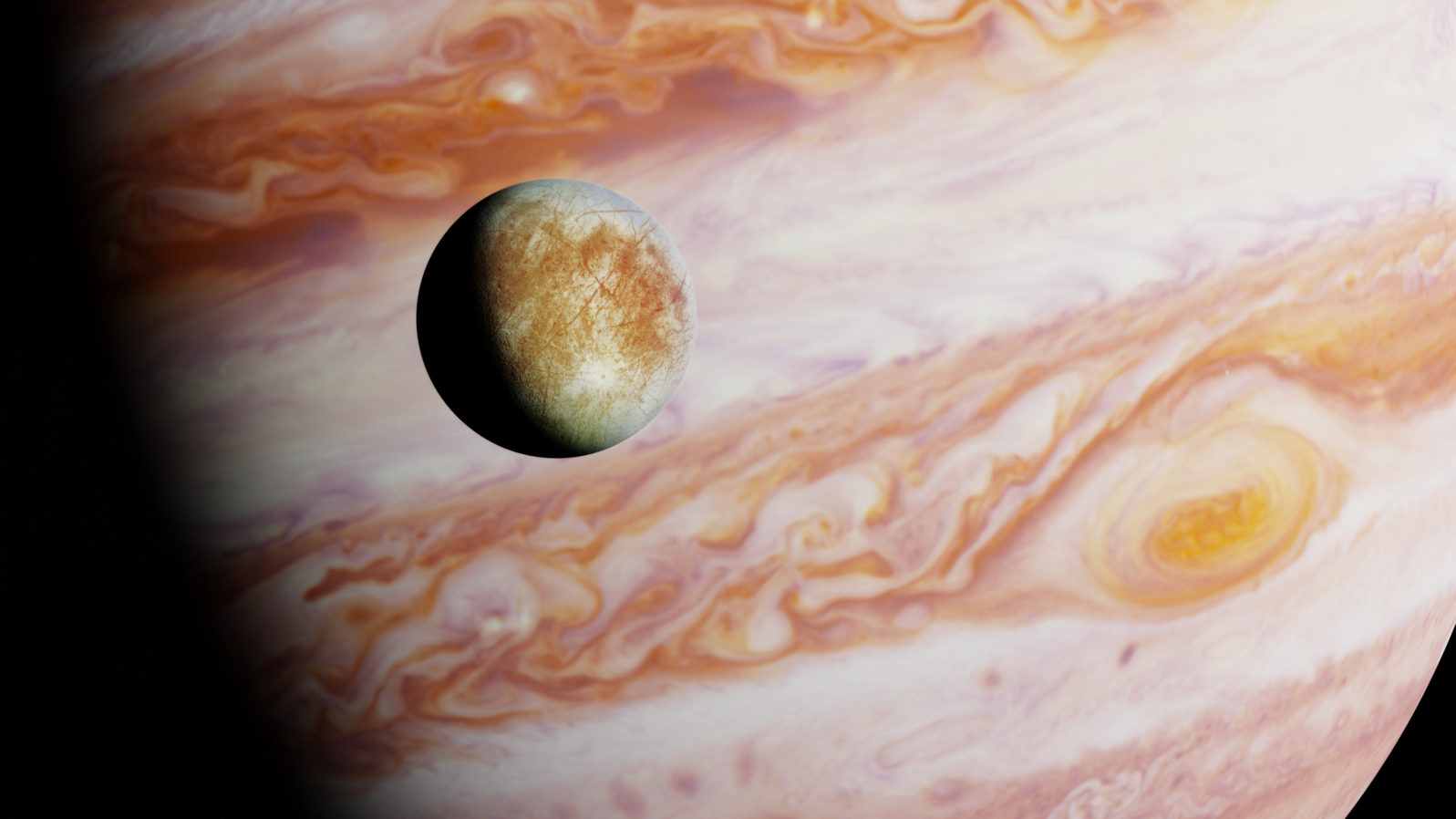Why Scientists Think There Might Be Life on Europa
Jupiter’s moon Europa, somewhat smaller than Earth’s moon, may have surface water and organic chemicals, researchers sayRecent evidence suggests that Europa’s icy shell may have pockets of liquid water:
“Because it’s closer to the surface, where you get interesting chemicals from space, other moons, and the volcanoes of Io, there’s a possibility that life has a shot if there are pockets of water in the shell,” says study author Dustin Schroeder, a geophysics expert at Stanford University in a statement. “If the mechanism we see in Greenland is how these things happen on Europa, it suggests there’s water everywhere.”
Elizabeth Gamillo, “Europa’s Icy Shell May Be Habitable for Life” at Smithsonian Magazine (April 20, 2022) The paper is open access.
NASA has noted the likely presence of organic chemicals as well:
For Europa to be potentially habitable, it would need to have the essential chemical ingredients for the chemistry of life. These include carbon, hydrogen, nitrogen, oxygen, phosphorus and sulfur, which are common elements, and scientists think it’s likely they were present on Europa as it formed. Later on, asteroids and comets impacted the moon and would have deposited even more organic, or carbon containing, materials.
“Why Europa/Ingredients for life” at Europa Clipper/NASA
What about energy?
Where would life on an icy world far from the Sun get energy? The type of life that might inhabit Europa likely would not be powered by photosynthesis – but by chemical reactions.
Europa’s surface is blasted by radiation from Jupiter. That’s a bad thing for life on the surface – it couldn’t survive. But the radiation may create fuel for life in an ocean below the surface.
“Why Europa/Ingredients for life” at Europa Clipper/NASA
Elsewhere, NASA notes, “In contrast to Ganymede and Callisto, Europa’s ocean is also probably in direct contact with warm rock at the seafloor. That interaction could supply hydrogen and other chemicals to the ocean. While the energy input for life on Earth comes primarily from the Sun, Europa’s energy input might come from surface chemistry and water-rock interactions on the seafloor.”
NASA has flown a number of spacecraft past Europa, gathering data, and is now readying the Europa Clipper, with a projected launch date of October 2024, for detailed reconnaissance flyby of the promising moon:
The assembly effort is already underway in clean rooms at the agency’s Jet Propulsion Laboratory in Southern California. Now, engineering components and science instruments are beginning to stream in from across the country and Europe. Before year’s end, most of the flight hardware – including a suite of nine science instruments – is expected to be complete. The main body of the spacecraft is a giant 10-foot-tall (3-meter-tall) propulsion module, designed and constructed by Johns Hopkins Applied Physics Laboratory (APL) in Laurel, Maryland, with help from NASA’s Goddard Space Flight Center in Greenbelt, Maryland, and JPL. The module, fitted with electronics, radios, cabling, and the propulsion subsystem, will ship to JPL this spring. Europa Clipper’s 10-foot-wide (3-meter-wide) high-gain antenna also will be arriving at the Lab soon.
Gretchen McCartney, Karen Fox, Alana Johnson, “NASA Begins Assembly of Europa Clipper Spacecraft” at NASA (March 4, 2022)
Of course, Europa could have all the ingredients for life without life. But here’s a thought: Theoretical astrophysicist Ethan Siegel has pointed out at Forbes: that our universe is fine-tuned for life, for our existence: “The fact that our Universe has such a perfect balance between the expansion rate and the energy density — today, yesterday, and billions of years ago — is a clue that our Universe really is finely tuned.” (December 19, 2019)
So is our solar system, according to astronomer Hugh Ross. His focus is on the good fortunes of Earth — but Europa shares at least some key features with Earth. Perhaps it is fine-tuned too.
Of course, the fine-tuning of our solar system has led to “philosophical disquiet,” as planetary scientists Tim Elliott and Sarah T. Stewart put it at Nature in 2013 — the inevitable question being “Why?”
But finding life in the subsurface oceans of Europa would probably shift the focus from Why? to Where else? in a hurry.
You may also wish to read: NASA develops a scale for assessing the chances of ET life We’ve come a long way from mere snatches of (maybe) information to the need for standards in evaluating the expected incoming mass. The idea is to give media some idea of the level of confidence in what the apparent signal might be telling us — biological activity or just chemistry?
